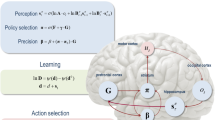Abstract
In this paper the author tries to disentangle some of the problems tied up in John Searle's famous Chinese-room-argument. In a first step to answer the question what it would be for a system to have not only syntax, but also semantics the author gives a brief account of the functioning of the language understanding systems (LUS) so far developed in the framework of AI research thereby making clear that systems like Winograd's SHRDLU are indeed doing little more than mere number crunching. But things would be entirely different, the author argues, if the database of a LUS were built up by the system itself via some perceptual component-at least, if this perceptual component had the capacity to distinguish objects having a certain property F from objects which do not. For in this case the system could store an internal representation of the fact that the object has the property F in its database if and only if the object in fact has that property. And this would be a good basis for calling such a system a genuine LUS. But Searle has objected to a very similar account of J. Fodor that nothing could be further from true language understanding. The reason for this complaint seems to be that Searle holds the view that a true LUS must e.g., know that the word “hamburgers” refers to hamburgers and that he moreover claims that this knowledge must be explicit or that the system must be aware of the reference of “hamburgers” to hamburgers. The author argues that this is asking too much. For it seems plausible to say that a system is able to understand e.g., the word “hamburger” even if it has only implicit knowledge of the fact that “hamburger” refers to hamburgers in the sense that it has the capacity to tell hamburgers from non hamburgers and the capacity to bring the word “hamburger” together just with objects of the former kind.
Similar content being viewed by others
Literatur
CumminsR.: 1983, The Nature of Psychological Explanation, The MIT Press, Cambridge, Massachusetts.
Fodor, J. A., (SB): 1980, ‘Searle on what only Brains can do’, in The Behavioral and Brain Sciences 3, 331f.
Searle, J., (MPB): 1980, ‘Minds, Brains and Programs’, in The Behavioral and Brain Sciences 3, 417–24, 450–56.
SearleJ., (GHW): 1986, Geist, Hirn und Wissenschaft, Suhrkamp Verlag, Frankfurt/M. (dt. Übersetzung von Minds, Brains, and Science. The 1984 Reith Lectures, British Broadcasting Corporation, London, 1984.)
WinogradT.: 1972, Understanding Natural Language, Academic Press, New York.
Winograd, T.: 1984, ‘Software für Sprachverarbeitung’, in Spektrum der Wissenschaft, S. 88–102.
Author information
Authors and Affiliations
Rights and permissions
About this article
Cite this article
Beckermann, A. Sprachverstehende maschinen. Erkenntnis 28, 65–85 (1988). https://doi.org/10.1007/BF00204425
Received:
Published:
Issue Date:
DOI: https://doi.org/10.1007/BF00204425




